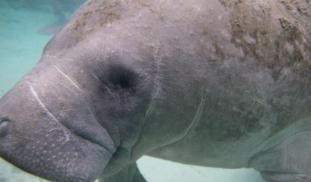Please wait...
About This Project
The Caribbean manatee, a subspecies of the West Indian manatee, inhabits coastal tropical waters of Latin America and the Caribbean. Habitat use is poorly studied in most of this range, including the Cuban archipelago, which contains the largest coastal habitat in the Caribbean. Our study is based in the Isla de La Juventud, south of the the main island of Cuba. Since manatees in this area live in dark water with poor visibility, we are using side-scan sonar to characterize the habitat.
More Lab Notes From This Project

Browse Other Projects on Experiment
Related Projects
How do polar bears stay healthy on the world's worst diet?
Polar bears survive almost entirely on seal fat. Yet unlike humans who eat high-fat diets, polar bears never...
Uncovering hidden insect diversity associated with a likely undescribed gall-forming midge
Does a likely undescribed species of gall-forming midge (pers. comm. Ray Gagné) on Eriodictyon plants (Yerba...
Macrofungi of the California archipelago
The eight islands of the California Archipelago are a well-studied biodiversity hotspot — but we know almost...



